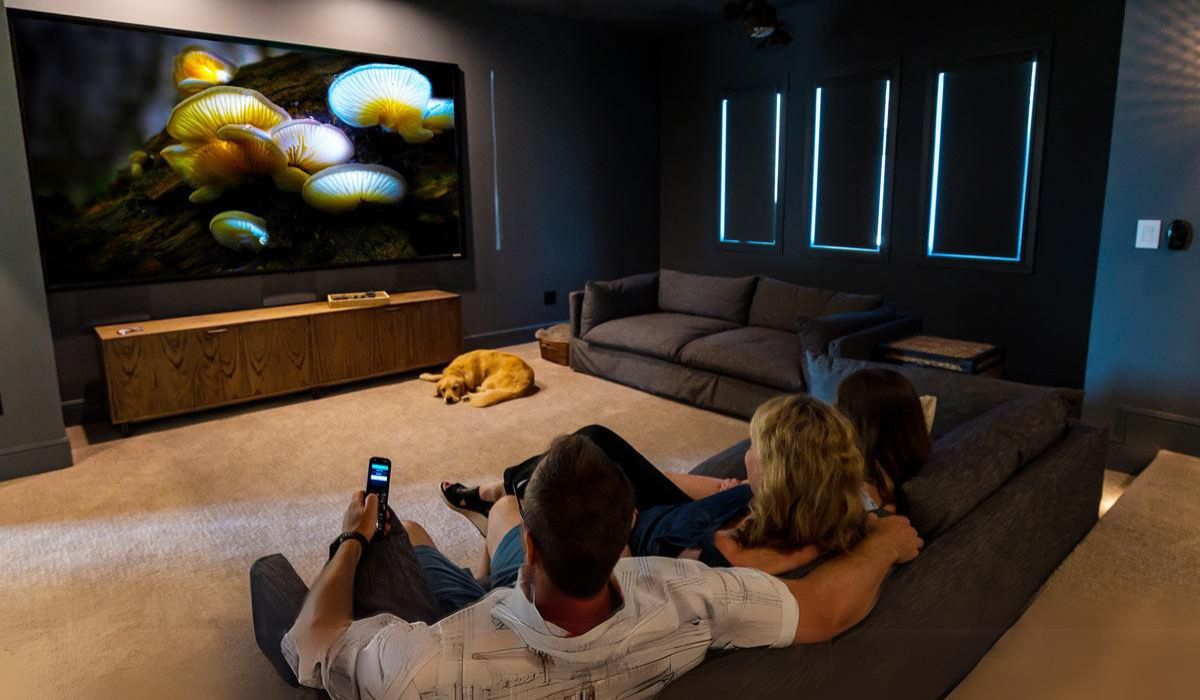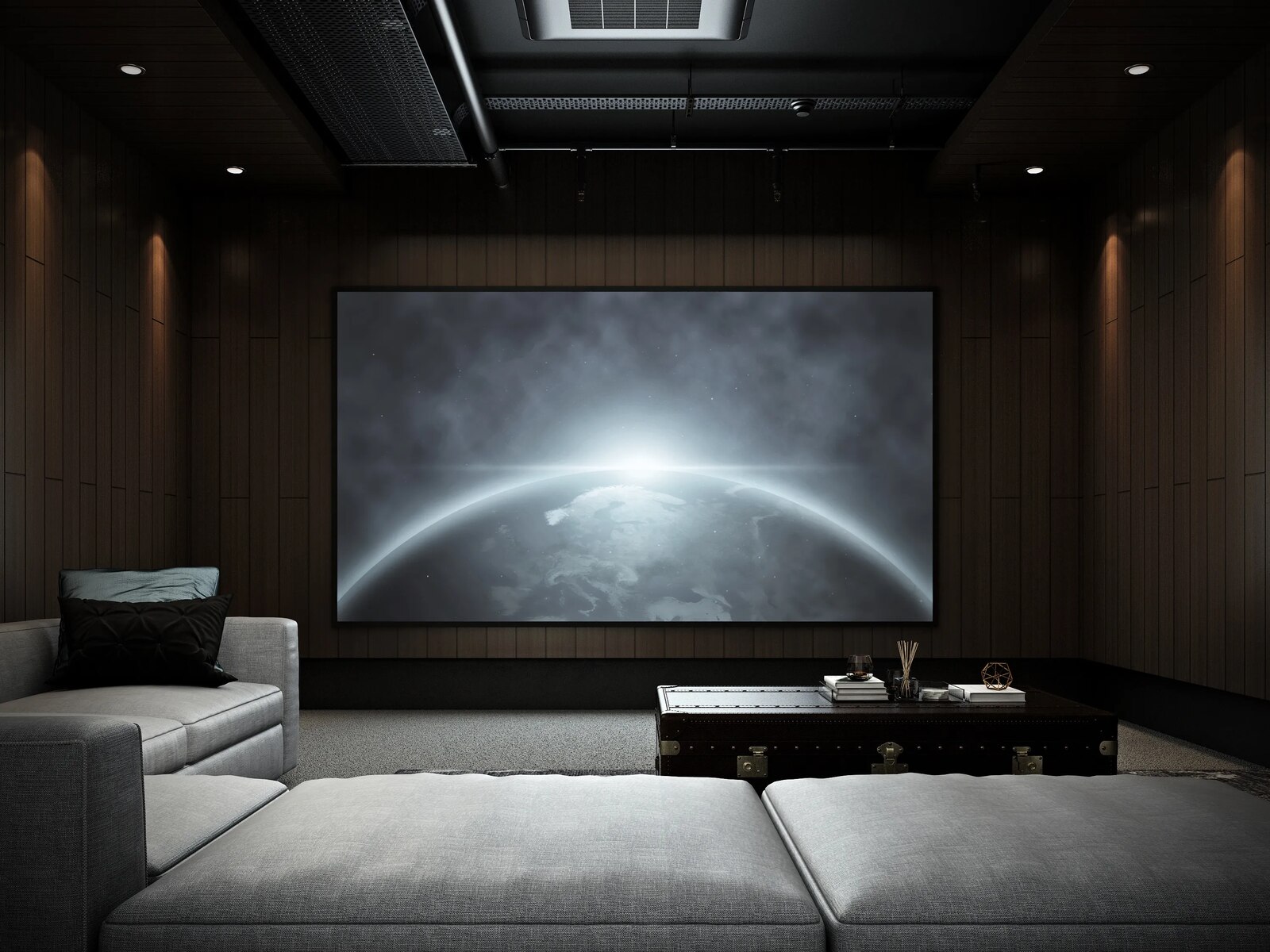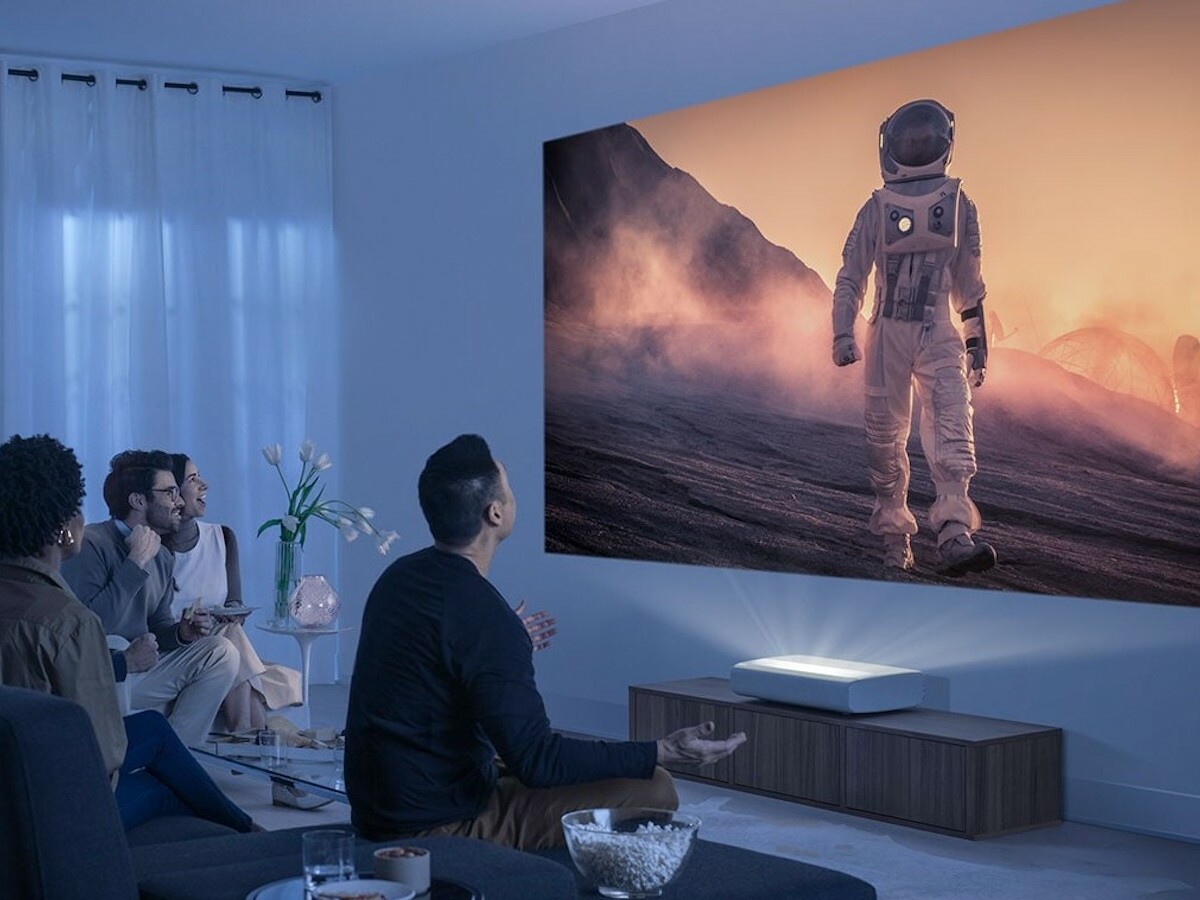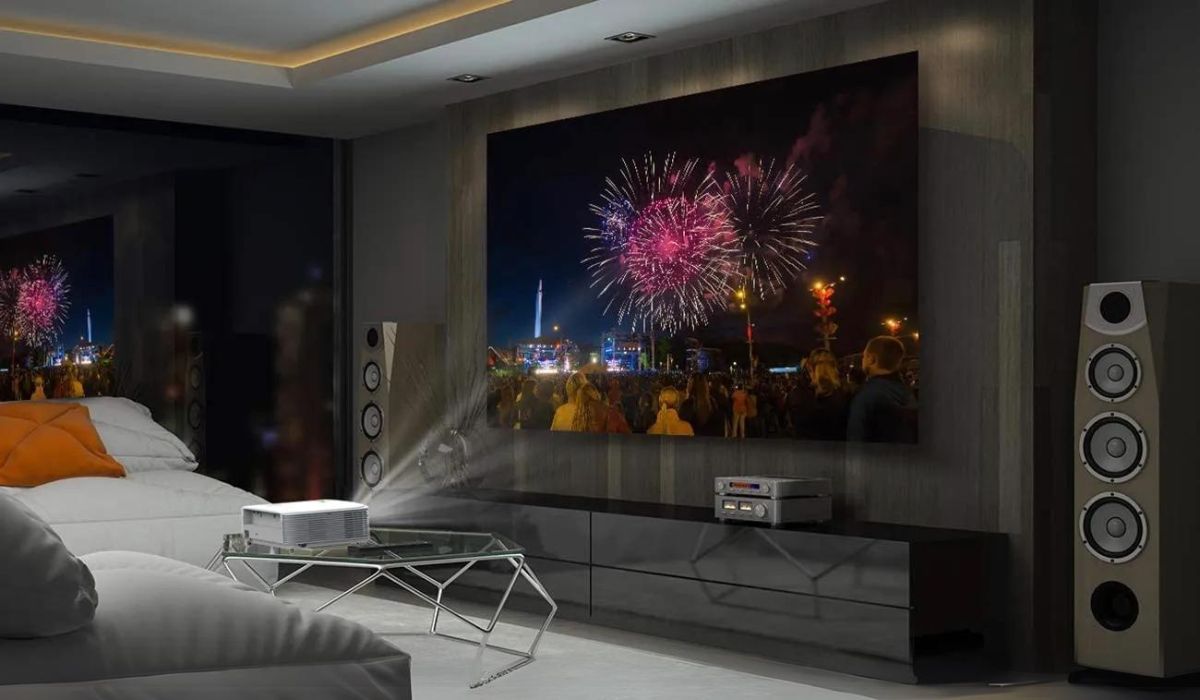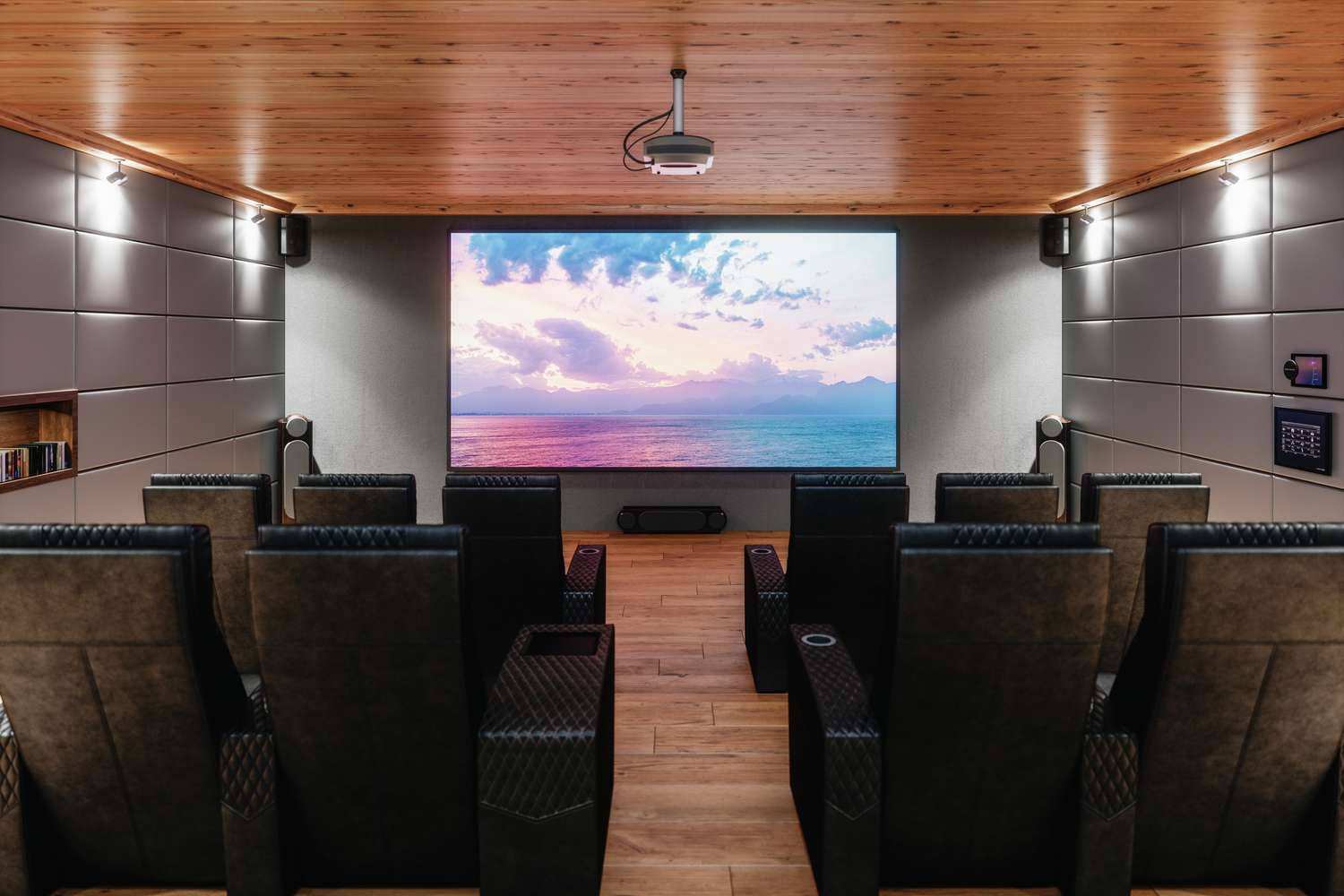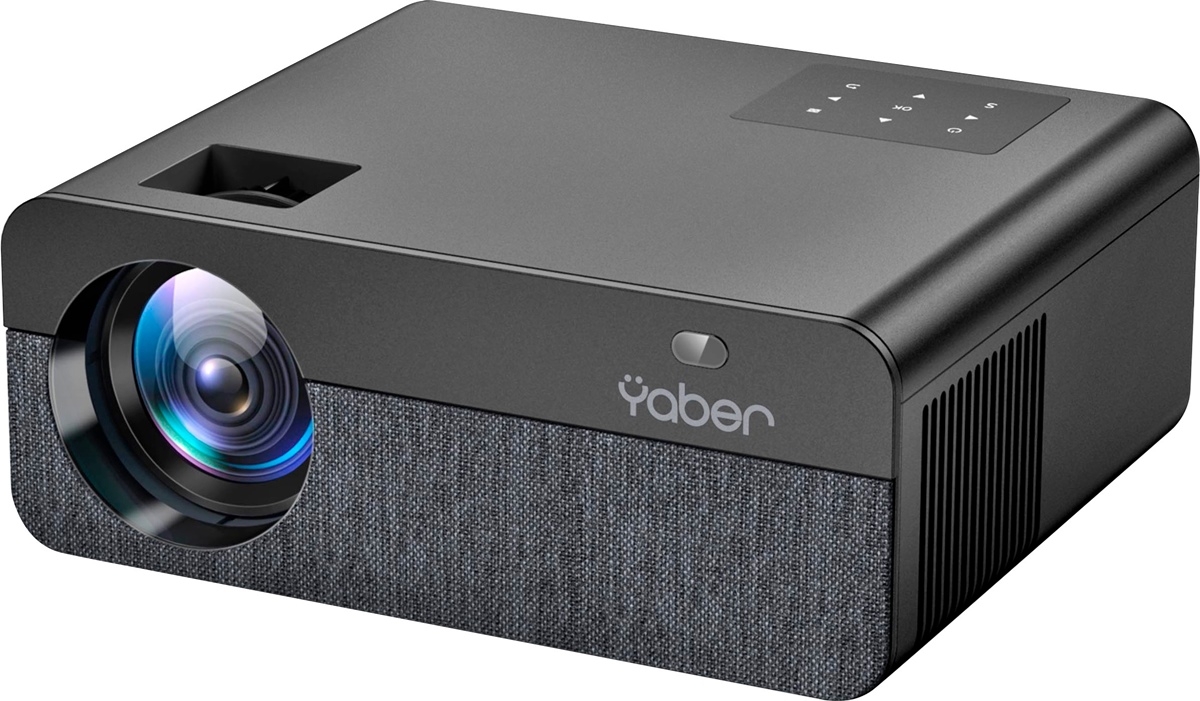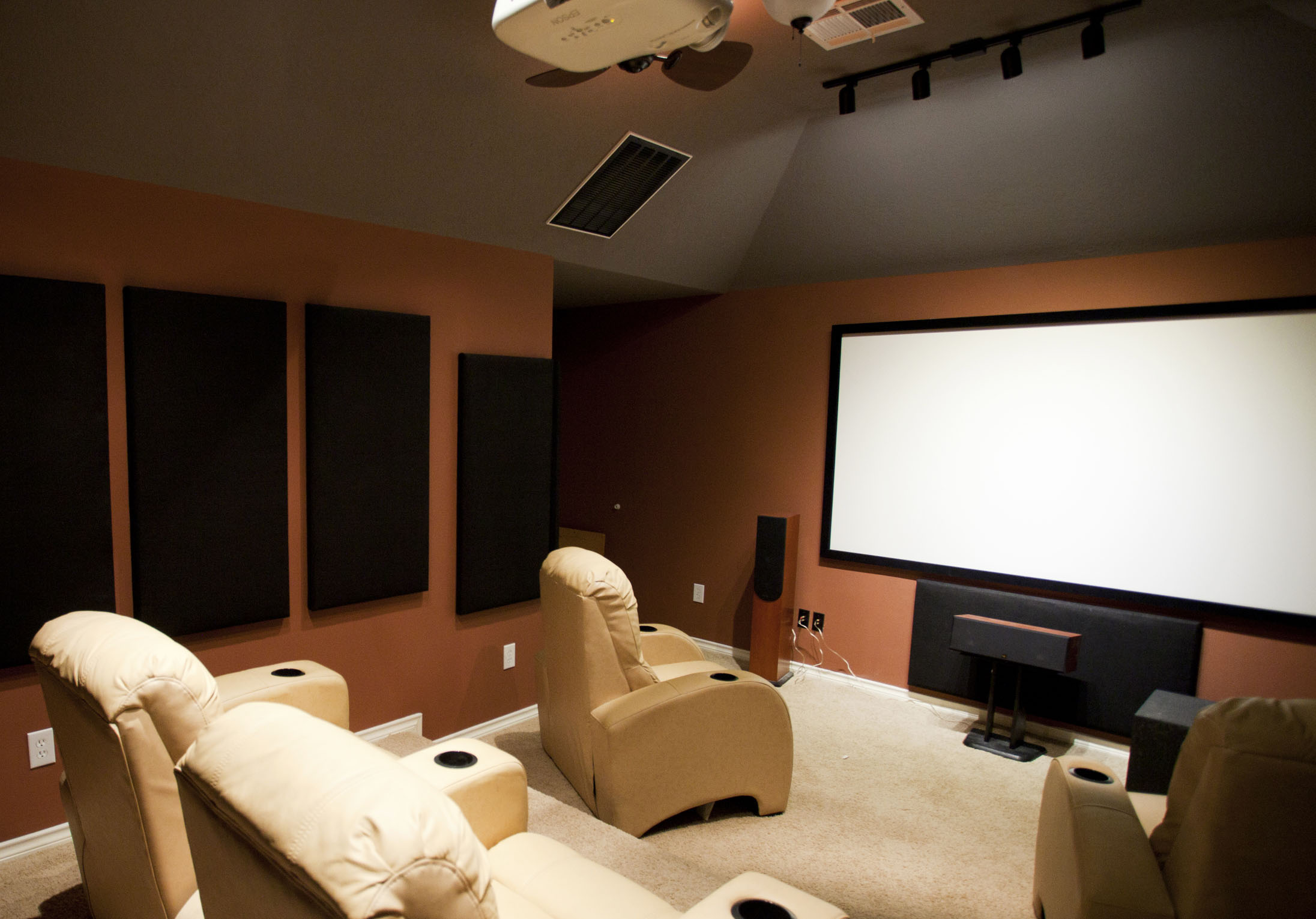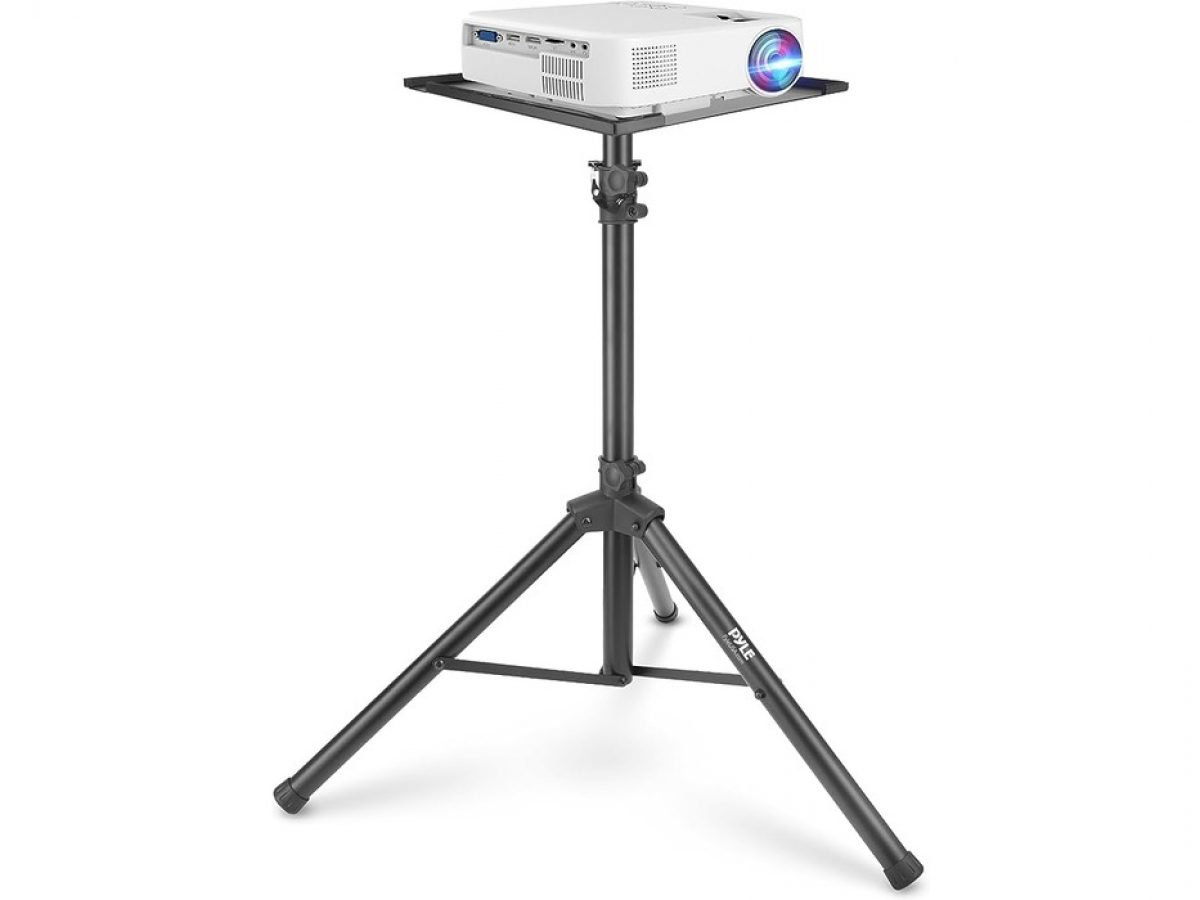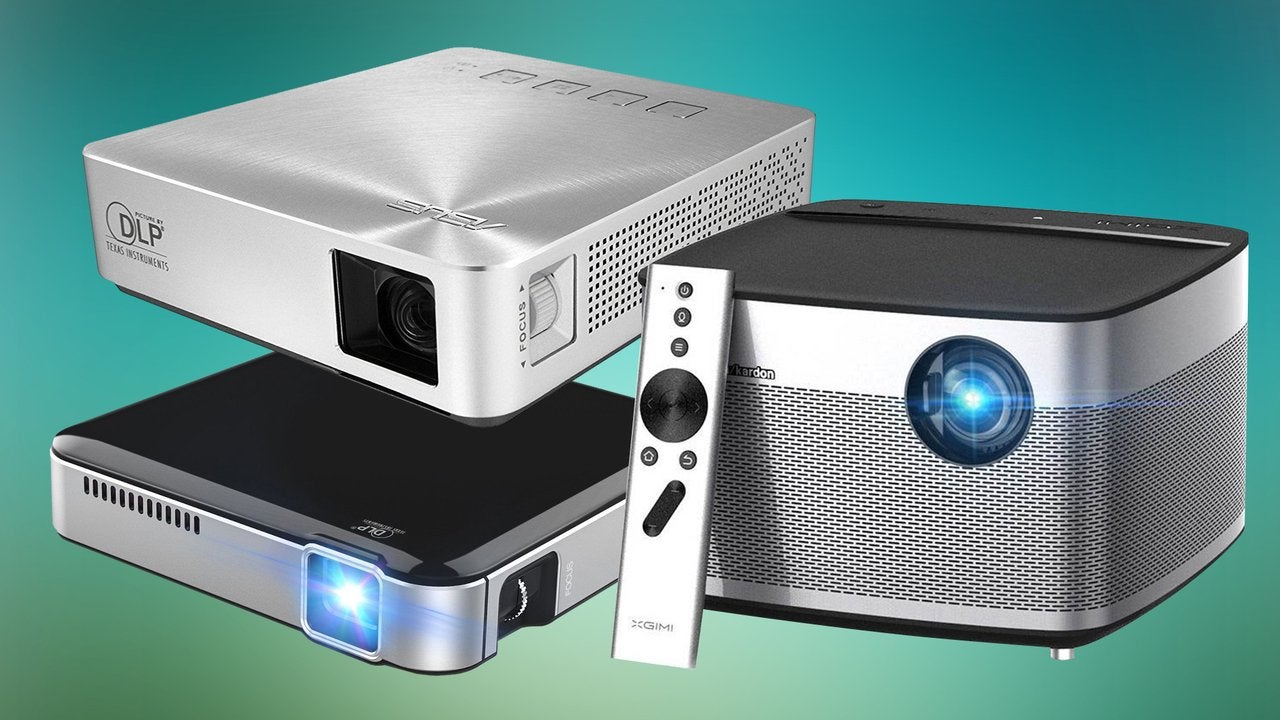Introduction
When it comes to creating an immersive home entertainment experience, a high-quality projector can make all the difference. Whether you're a movie buff, a gaming enthusiast, or a sports fan, a home theater projector can bring the big-screen experience right into your living room. However, with a wide array of options available in the market, choosing the right projector can be a daunting task. From brightness and resolution to connectivity and 3D capability, there are several factors to consider before making a purchase. In this guide, we'll explore the key features to look for in a home theater projector, helping you make an informed decision and bring your cinematic dreams to life.
A home theater projector serves as the centerpiece of your entertainment setup, transforming your space into a captivating viewing environment. Whether you're enjoying a movie night with friends or diving into the latest video game release, the quality of the projector can significantly impact your overall experience. By understanding the essential features and specifications, you can ensure that your investment aligns with your specific needs and preferences.
Throughout this guide, we'll delve into the critical aspects of home theater projectors, including brightness and contrast ratio, resolution, throw distance and screen size, connectivity options, built-in speakers, 3D capability, lamp life and maintenance, as well as price and budget considerations. By the end, you'll have a comprehensive understanding of what to look for in a home theater projector, empowering you to select the perfect model for your home entertainment setup. Let's embark on this journey to uncover the key elements that will elevate your viewing experience to new heights.
Brightness and Contrast Ratio
When evaluating a home theater projector, brightness and contrast ratio are two crucial factors that directly impact the visual quality of the projected images. The brightness of a projector is measured in lumens, and it determines how well the projected image will appear in various lighting conditions. For a dedicated home theater room with controlled lighting, a projector with a higher lumen rating can deliver vibrant and sharp images, ensuring an immersive viewing experience. On the other hand, if the projector will be used in a living room or multipurpose space with ambient light, a higher lumen output becomes essential to combat the external light sources and maintain picture clarity.
Additionally, the contrast ratio plays a pivotal role in defining the depth and richness of the projected images. A higher contrast ratio results in more distinct differentiation between the darkest and brightest parts of the image, leading to enhanced detail and a more lifelike visual representation. This is particularly crucial for scenes with subtle gradations of color and shadow, as a superior contrast ratio can bring out the intricacies that might otherwise be lost in translation.
When selecting a home theater projector, it’s essential to consider the intended usage environment and the ambient lighting conditions. A projector with a higher lumen output and an impressive contrast ratio can ensure that your viewing experience remains captivating and true to the original content, whether you’re watching a thrilling action movie or immersing yourself in the vivid landscapes of a nature documentary.
Resolution
Resolution is a key determinant of the visual clarity and sharpness offered by a home theater projector. It refers to the number of pixels that compose the projected image, with higher resolutions delivering more detailed and lifelike visuals. When exploring projector options, it’s essential to consider the resolution that best aligns with your viewing preferences and the content you intend to enjoy.
Common resolutions for home theater projectors include Full HD (1920 x 1080 pixels), 4K Ultra HD (3840 x 2160 pixels), and even 8K (7680 x 4320 pixels) for the most cutting-edge viewing experiences. A higher resolution allows for finer details to be displayed, resulting in sharper images and more immersive viewing, especially on larger screens. For cinephiles and avid gamers, a higher resolution can elevate the overall visual impact, bringing out the nuances in cinematic scenes and enhancing the intricacies of gaming graphics.
It’s important to note that the viewing distance also plays a role in determining the ideal resolution. For smaller screens or shorter viewing distances, a Full HD resolution may suffice, providing a compelling visual experience without the need for the highest pixel density. However, for larger screens and immersive setups where viewers are positioned closer to the screen, a 4K or higher resolution can make a discernible difference, ensuring that every detail is rendered with precision and clarity.
By selecting a home theater projector with an optimal resolution for your viewing environment and preferences, you can unlock the full potential of your entertainment content, whether it’s the latest blockbuster movie, a thrilling sports event, or an intense gaming session. The right resolution can bring your favorite media to life in stunning detail, captivating your senses and elevating your overall viewing experience.
Throw Distance and Screen Size
When setting up a home theater projector, understanding the throw distance and screen size considerations is essential for achieving the desired visual impact and optimal viewing experience. The throw distance refers to the distance between the projector and the screen, and it directly influences the size of the projected image. By carefully planning the throw distance, you can ensure that the projected image fits the available space and delivers an immersive viewing experience.
It’s important to consult the projector’s specifications and user manual to determine the throw ratio, which indicates how far the projector needs to be placed from the screen to achieve a specific image size. Some projectors offer short-throw or ultra-short-throw capabilities, allowing them to be placed closer to the screen while still producing large, cinematic visuals. This is particularly advantageous in smaller rooms or spaces where traditional throw distances may not be feasible.
Additionally, the screen size plays a crucial role in defining the immersive nature of the viewing experience. By selecting an appropriately sized screen for your space and seating arrangement, you can ensure that every viewer enjoys a captivating and encompassing visual display. Whether you opt for a fixed-frame screen, a motorized retractable screen, or a high-quality projection surface, the screen size should complement the throw distance and the projector’s capabilities to create a seamless and engaging viewing environment.
By carefully considering the throw distance and screen size, you can tailor the projector setup to suit your specific space and preferences, whether you’re creating a dedicated home theater room or integrating a projector into a multipurpose living area. This thoughtful approach ensures that the projected images are optimized for maximum impact, enveloping viewers in a captivating visual experience that mirrors the grandeur of a traditional cinema.
Connectivity Options
When selecting a home theater projector, the available connectivity options play a pivotal role in ensuring seamless integration with various media sources and devices. A versatile range of connectivity ports and wireless capabilities empowers users to effortlessly connect their preferred content sources, ranging from streaming devices and gaming consoles to Blu-ray players and cable boxes. By evaluating the connectivity features of a projector, you can streamline the setup process and enjoy a diverse array of entertainment options.
Common connectivity ports found in home theater projectors include HDMI, USB, VGA, and audio output ports, providing compatibility with an extensive range of devices and media sources. HDMI ports are particularly essential for high-definition content delivery, making them indispensable for connecting Blu-ray players, gaming consoles, and streaming devices that require a reliable and high-bandwidth connection. Additionally, USB ports can facilitate direct media playback from external storage devices, offering convenient access to a wide variety of multimedia content.
Wireless connectivity options, such as Wi-Fi and Bluetooth, further enhance the projector’s versatility by enabling seamless streaming from compatible devices and simplifying the setup process. With wireless capabilities, users can effortlessly mirror their smartphone, tablet, or laptop screens, expanding the range of content that can be enjoyed on the big screen without the constraints of physical cables.
Furthermore, the presence of audio output ports allows for flexible audio configurations, enabling users to connect external speakers, soundbars, or home theater systems for a truly immersive auditory experience. By considering the projector’s connectivity options, you can ensure that your preferred devices and media sources seamlessly integrate with the projector, offering a hassle-free and enriching entertainment setup.
Built-in Speakers
The presence of built-in speakers in a home theater projector can significantly influence the overall audiovisual experience, especially for users seeking a convenient and streamlined setup. While external audio systems often deliver superior sound quality and immersive surround sound, built-in speakers offer a degree of simplicity and accessibility, catering to users who prioritize ease of installation and minimalistic design.
Home theater projectors equipped with built-in speakers provide an all-in-one solution for audio playback, eliminating the need for separate speaker systems and intricate wiring setups. This can be particularly advantageous for smaller spaces or temporary setups where a compact and self-contained audio solution is preferred. Additionally, built-in speakers can serve as a practical option for casual viewing or impromptu entertainment sessions, allowing users to enjoy multimedia content without the complexities of configuring external audio equipment.
While built-in speakers offer convenience, it’s important to manage expectations regarding sound quality and depth. In comparison to dedicated audio systems, built-in projector speakers may have limitations in delivering robust bass, intricate spatial audio effects, and high-fidelity sound reproduction. However, for casual movie nights, video game sessions, or multimedia presentations, the built-in speakers can adequately complement the visual experience, providing clear dialogue and ambient sound reproduction.
For users who prioritize audio excellence and immersive soundscapes, integrating a home theater projector with a separate audio system, such as a soundbar, surround sound speakers, or a dedicated home theater receiver, can elevate the auditory experience to new heights. By leveraging the projector’s audio output options, users can seamlessly connect external audio devices, harnessing the full potential of their favorite movies, music, and games.
Ultimately, the inclusion of built-in speakers in a home theater projector offers a convenient audio solution for casual viewing and straightforward setups, catering to users who value simplicity and ease of use. While external audio systems remain a compelling choice for audiophiles and enthusiasts, built-in speakers provide a practical and accessible audio option, enhancing the overall entertainment experience.
3D Capability
The 3D capability of a home theater projector adds an extra dimension to the viewing experience, immersing viewers in a captivating realm of depth and realism. By supporting 3D content playback, projectors can elevate the excitement of watching movies, gaming, and experiencing immersive multimedia content. The 3D feature enables compatible content to be presented with enhanced depth perception, creating an engaging visual spectacle that transcends traditional two-dimensional viewing.
For enthusiasts of 3D movies and gaming, the projector’s 3D capability unlocks a world of immersive entertainment, allowing viewers to experience their favorite content in a whole new light. Whether it’s the exhilarating action sequences of a blockbuster film or the immersive environments of 3D-enhanced video games, the 3D feature can transport audiences into a realm where visuals come to life with an added sense of depth and realism.
When considering a projector’s 3D capability, it’s essential to ensure compatibility with 3D content sources, such as Blu-ray players, gaming consoles, and media streaming devices. Additionally, the availability of compatible 3D glasses, either active or passive, is crucial for experiencing the full impact of 3D visuals. By embracing the 3D capability of a home theater projector, users can unlock an immersive and visually captivating dimension of entertainment, enhancing their viewing experiences with an extra layer of depth and realism.
Lamp Life and Maintenance
The lamp life and maintenance considerations of a home theater projector are crucial factors that directly impact the long-term usability and cost of ownership. The lamp life, often specified in hours, indicates the duration for which the projector’s lamp is expected to function optimally before requiring replacement. Understanding the projected lamp longevity allows users to gauge the ongoing maintenance needs and associated costs, ensuring a sustainable and reliable viewing experience.
Projectors with extended lamp life ratings offer the advantage of prolonged usage before requiring a replacement lamp, reducing the frequency of maintenance and the associated expenses. This is particularly beneficial for users who anticipate regular or extended usage of their projector, as it minimizes the inconvenience and downtime associated with lamp replacements. Additionally, projectors with eco-mode settings and energy-efficient lamps can further extend the lamp life, contributing to long-term sustainability and cost-effectiveness.
When it comes to maintenance, periodic cleaning and proper ventilation are essential for preserving the projector’s performance and maximizing the lamp’s lifespan. Dust accumulation within the projector can obstruct airflow and lead to overheating, potentially affecting the lamp’s efficiency and longevity. By adhering to recommended maintenance practices, such as cleaning the projector’s filters and ensuring adequate ventilation, users can safeguard the projector’s internal components and prolong the lamp’s operational lifespan.
Furthermore, understanding the availability and cost of replacement lamps is critical for long-term planning and budgeting. Projectors with readily accessible and competitively priced replacement lamps offer added convenience and affordability, allowing users to seamlessly maintain their projector’s optimal performance without incurring exorbitant expenses. By factoring in the projected lamp life and the associated maintenance requirements, users can make informed decisions regarding the ongoing care and sustainability of their home theater projector.
Price and Budget Considerations
When exploring the realm of home theater projectors, price and budget considerations play a pivotal role in the decision-making process, influencing the available features, performance, and overall value proposition. The price range for projectors can vary significantly, encompassing entry-level models designed for casual use to high-end, feature-rich units tailored for immersive home entertainment experiences. Understanding the relationship between price and the desired features empowers users to make informed choices that align with their budget and viewing expectations.
Projectors in the lower price brackets offer accessible entry points into the world of home cinema, providing essential features for casual viewing and occasional use. While budget-friendly projectors may have limitations in brightness, resolution, and advanced features, they can serve as viable options for users seeking a basic and cost-effective projection solution. These entry-level projectors cater to individuals looking to enhance their entertainment setup without significant financial investment.
On the other end of the spectrum, premium projectors command higher price points, often offering advanced features such as 4K resolution, high brightness, enhanced color accuracy, and comprehensive connectivity options. These high-end models are tailored for enthusiasts and discerning users who prioritize superior visual quality, immersive experiences, and cutting-edge technology. While the initial investment may be substantial, premium projectors deliver exceptional performance and feature sets that cater to the demands of dedicated home theaters and multimedia enthusiasts.
When considering price and budget, it’s essential to assess the intended usage, viewing environment, and long-term value of the projector. By aligning the budget with the desired features and performance, users can make informed decisions that optimize the overall entertainment experience while ensuring financial prudence. Additionally, exploring promotions, discounts, and bundled offerings can provide opportunities to acquire feature-rich projectors at competitive price points, enhancing the affordability and value proposition of the investment.
Ultimately, the price and budget considerations of home theater projectors encompass a spectrum of options, catering to diverse user preferences, viewing requirements, and financial parameters. By evaluating the available features, performance attributes, and long-term value, users can identify projectors that strike a harmonious balance between price and the desired entertainment experience, facilitating a rewarding and budget-conscious investment.
Conclusion
As we conclude our exploration of the essential features to consider in a home theater projector, it becomes evident that the selection process involves a careful balance of technical specifications, usability, and budget considerations. From brightness and contrast ratio to resolution, throw distance, and connectivity options, each aspect contributes to the immersive and captivating nature of the viewing experience. By understanding these key elements, users can make informed decisions that align with their specific entertainment needs and preferences.
When embarking on the journey to choose a home theater projector, it’s crucial to assess the viewing environment, intended usage, and long-term value proposition. Whether seeking a budget-friendly entry into home cinema or pursuing a premium, feature-rich projection solution, the market offers a diverse array of options to cater to various user requirements. By carefully evaluating the trade-offs between price, performance, and feature sets, individuals can identify projectors that deliver optimal visual quality, seamless integration, and long-term reliability.
Furthermore, the evolving landscape of home entertainment technology continues to introduce innovative advancements in projector design, such as enhanced color accuracy, extended lamp life, and wireless connectivity, shaping the future of immersive viewing experiences. As users navigate the dynamic landscape of projector offerings, staying informed about the latest developments and technological trends empowers them to make forward-looking investment decisions that anticipate future entertainment needs.
Ultimately, the world of home theater projectors offers a gateway to transformative and captivating visual experiences, whether it’s the thrill of cinematic blockbusters, the excitement of immersive gaming, or the joy of shared multimedia moments with friends and family. By embracing the key features outlined in this guide and aligning them with individual preferences, users can embark on a journey to create a personalized and enthralling home entertainment environment that transcends the boundaries of traditional viewing.
With a comprehensive understanding of the critical elements to look for in a home theater projector, individuals are poised to make informed decisions that elevate their entertainment spaces, bringing the magic of the big screen right into the comfort of their homes. By embracing the fusion of cutting-edge technology and immersive storytelling, users can embark on a visual odyssey that transforms their living spaces into captivating realms of cinematic wonder.







